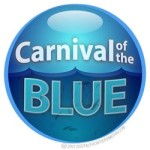
Because of my previous trumpeting many of you may believe I scoff at anything non-mollusca. Untrue! I say! Indeed, I am friend of all invertebrate. My favorite books on my shelf is Barnes and Brusca & Brusca.
Just to prove I love all those squishy, squiggly, and slimey, I provide a link to the Sea Cucumber Expedition Blog (hat tip Jeff Ives). Tim Werner from the New England Aquarium is on a three week biodiversity trip to Madagascar. After your done loathing Tim for this, you should check out all of his recent discoveries inlcuding six foot sea cucumbers, two-foot sea stars, and “a hollow-stemmed gorgonian coral only eight inches tall that yielded over 100 individual crustaceans and represented at least seven species.”






Holy Brachyuran Bungalows Batman!!
That would be the expedition to be on.
(Staying away from any comments about the 6′ slender cucumbers versus 2′ stout ones…)
How odd. What kind of holaxonian gorgonian is this, I wonder? Only a few are adapted for mud.
Way cool!
Peter, do gorgonians hollow out when they die? Maybe the crustaceans were colonizing dead gorgonian substrate.
Anyways, if this is a common habitat for crustaceans this opens up some cool questions about habitat islands on a small scale.
Tim sends his regards to you all, and I’m sure he’ll green with envy while you’re on your next expedition …
I’ll let you guys know first if one of those inverts tries to eat him.
Please send Tim some deep-sea love. I imagine the gorgonians are quite diverse there in Madagascar and around the Mascarene Shelf. Probably a life’s work to figure them all out!
@ KZ Yes, some gorgonians hollow out. The temperate Primnoa reseadeformis comes to mind. Gorgonians skeletons can persist a while after a colony expires, too. Sometimes colonies are toppled by currents, slumps, or fishing gear and they can litter the seafloor, creating habitat. Living colonies can also support hundreds of individuals.